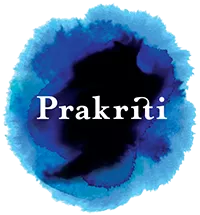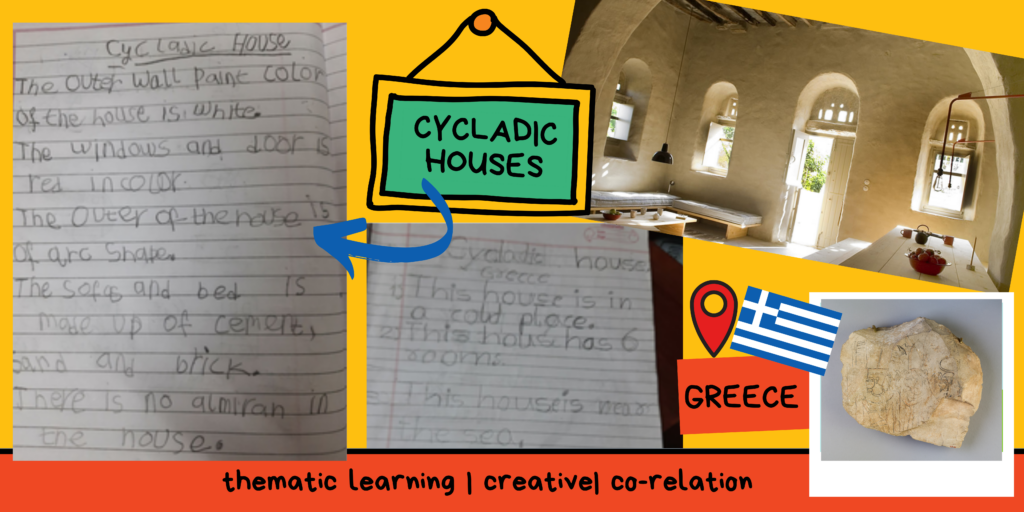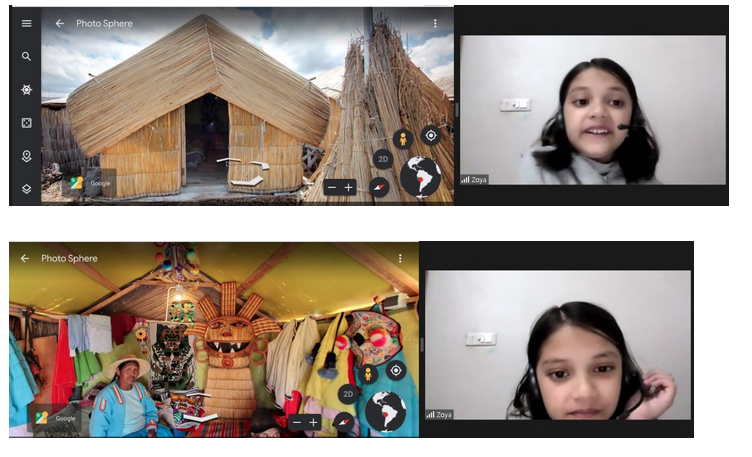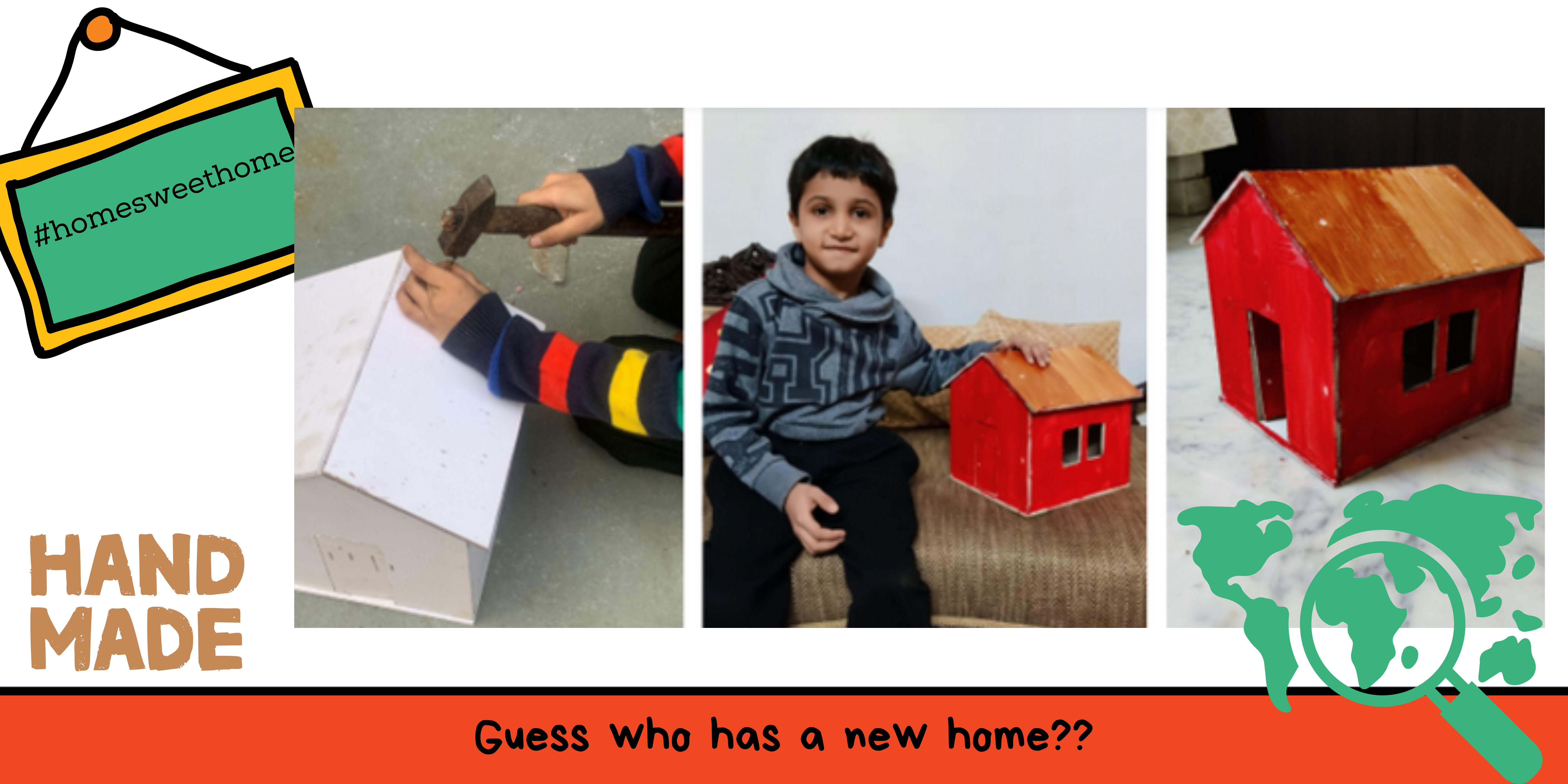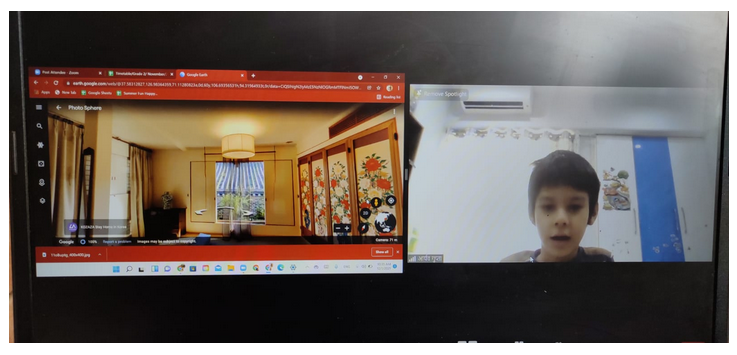In the current times of easy accessibility to a one-stop platform for any information like Google, it is significantly important to calibrate the surge of exposure in the learning journeys of our young learners. They must be encouraged to inertly foster a higher degree of collaborative task management, exercise their understanding through observational learning while balancing and navigating through excessive information download.
In our endeavor to motivated young learners and forge in quest to inquire, systematically research, and learn to assimilate their learnings, our end-of-the-season theme “Homes” made an interesting point. The theme invariably imbued an overwhelming response from amongst our Grade 2 group children who explored varieties of home styles, structured models from an assortment of materials for creating homes, explored animal habitats, and constructively explored Google Earth to find houses in different parts of the world.
Interpretation of the word – HOME
Learners were encouraged to interpret the meaning of home/house as per their understanding and comfortably share their favorite spots/ moments/ conversations they could recall. This exercise helped them collectively to take short trips into the lives of their cohort and discover more about each other on a personal level, something that had been a miss owing to the pandemic.
Unusual Homes
The continued conversations led to the discussions over the ownership of one’s space, e.g: Who maintains it, how they contribute to it in their everyday lives, and the same in the larger context of community living. Facilitators divulged in expanding their understanding of home structures in geographical and historical contexts at this point too.For example : Cycladic houses take their name from the Cyclades, a group of islands in Greece’s Aegean Sea. The pure white exterior — traditionally achieved with a lime whitewash — creates the distinctive look and helps reflect the hot summer sun. Plus, the lime acts as a natural disinfectant.Source : Google
Similarly ,a unit from Cambridge titled ‘Tales from around the World’ was introduced at this juncture, wherein learners were engaged in identifying the physical features and habitats of different animals/birds that may have had influenced their eventual habitat design. Describing words was introduced through an assortment of images to persuade them to create prose/ riddles from the learning and present them elective.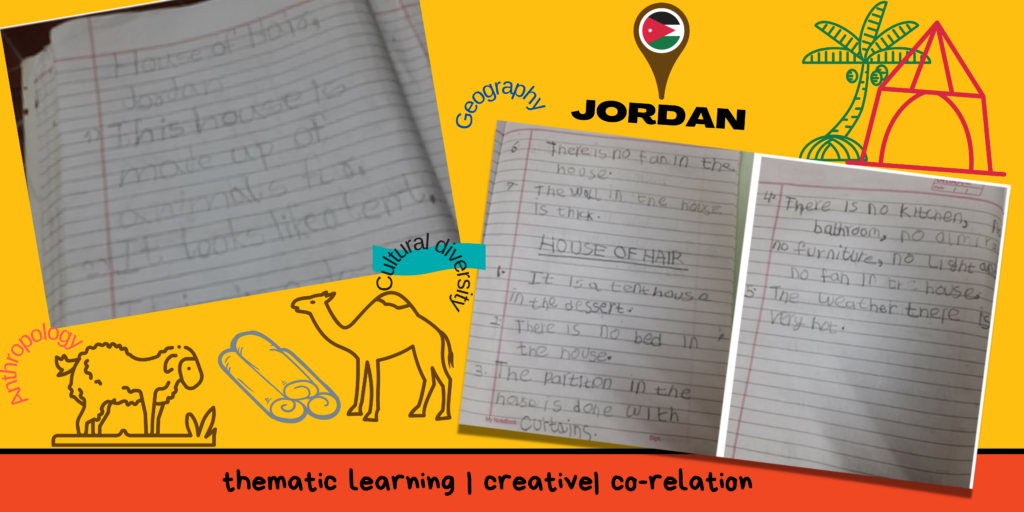 For example the “The House of Hair – Jordan”, may sound strange however this very unique form of housing – the Bait Al Shaar, or house of hair is created by the Bedouins and is a labor of love by Bedouins women, who are single-handedly responsible for producing the tent onsite, starting with making thread out of sheep/goat hair and then weaving the thread into fabric before finally sewing the sheets of fabric into a tent.Source: Gulf News
For example the “The House of Hair – Jordan”, may sound strange however this very unique form of housing – the Bait Al Shaar, or house of hair is created by the Bedouins and is a labor of love by Bedouins women, who are single-handedly responsible for producing the tent onsite, starting with making thread out of sheep/goat hair and then weaving the thread into fabric before finally sewing the sheets of fabric into a tent.Source: Gulf News
My Future House: A project
A project -based engagement to propel learners imagination and forge into creativity. As the name suggests, learners were encouraged to think organically; and place themselves in conditions less experienced.From it they were directed to either creatively write or draw the personal aspirations for their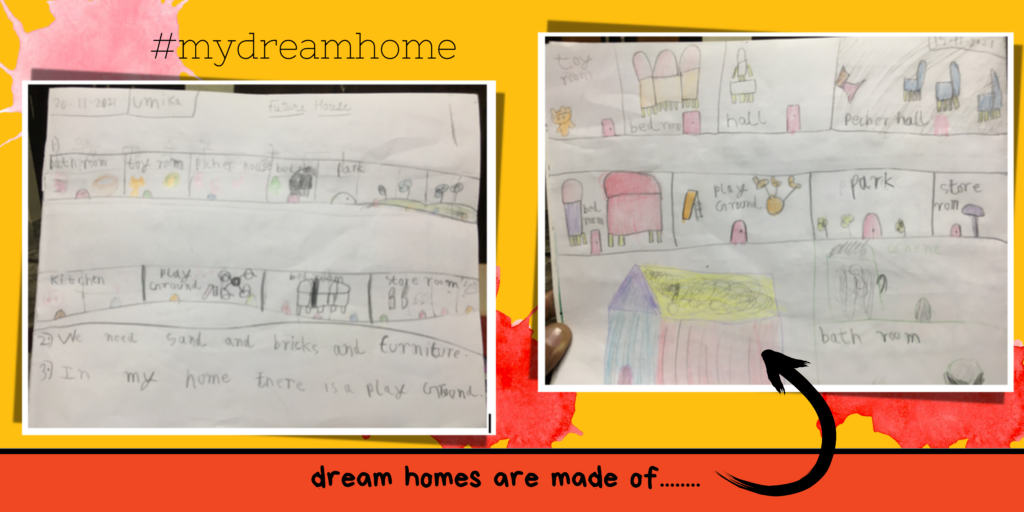 “Dream Homes”. Here are a few snippets.
“Dream Homes”. Here are a few snippets.
The final presentation was ,by each learner wherein he /she presented a homes style from a specific region and its salient features which make it extremely unique and ideal for the stated locations.Exploration with Google Earth saw learners educating themselves and their batch mates of various types of homes from around the world and diving deeper into the architectural features.
- Reed House
- Hanok House
- Bird House
- Mongolian Ger
- Fujian Tulou
The fear of over load of information specially amongst the younger generation is real however if this very technology is mindfully utilized it will continue to play a vital role in building the future by creating opportunities for widespread communication and collaborative outcomes.
